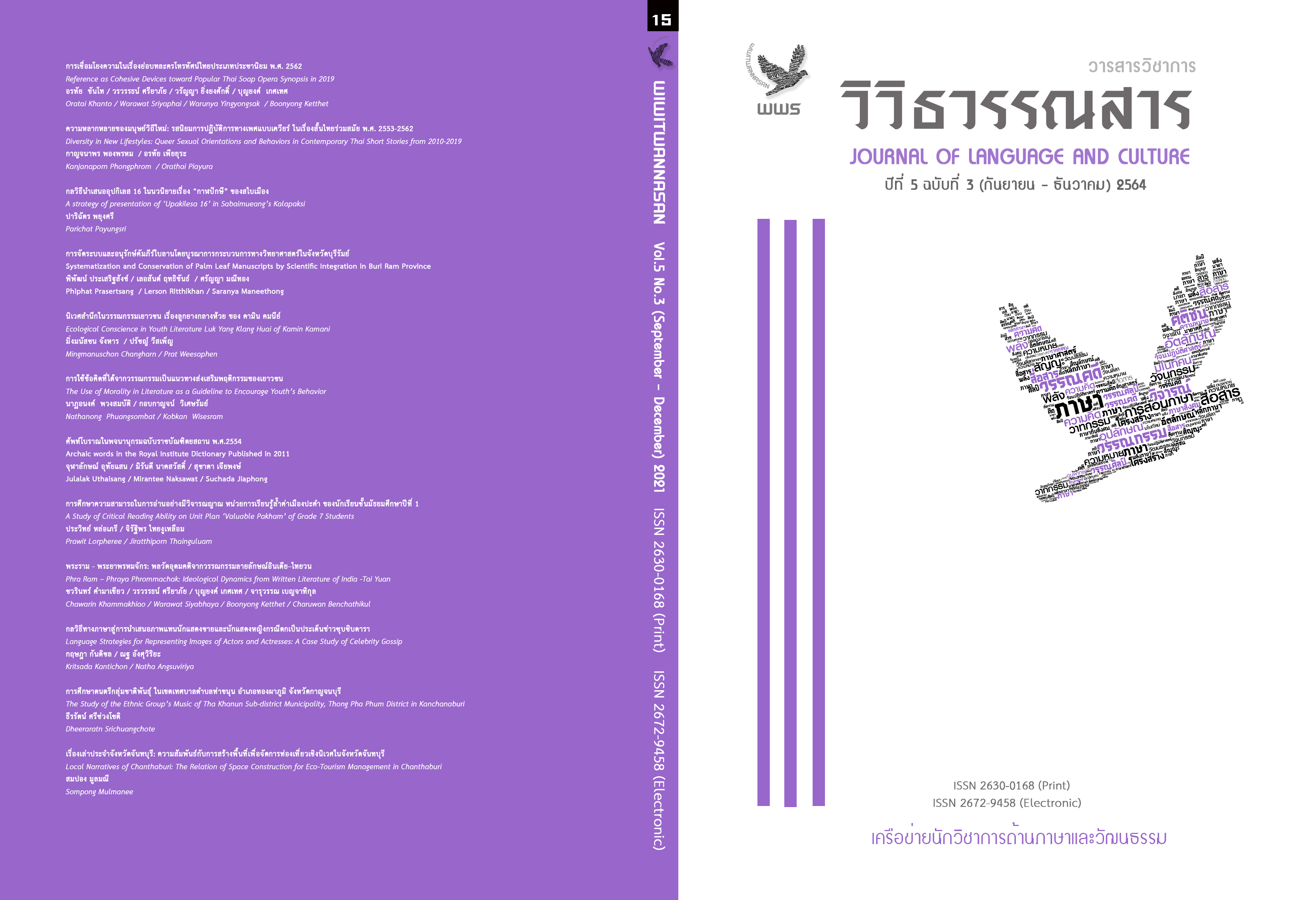Language Using Strategies for Representing Images of Actors and Actresses A Case Study of Celebrity Gossip
Main Article Content
Abstract
This research has the objectives to study and analyze the language using strategies from online headlines for representing images of actors and actresses. The data analyzed were primary and secondary headlines from entertainment news sources collected through the website News.kapook.com, 114 articles in total. The findings revealed three language using strategies as follows: 1) Vocabulary using strategies: It could be found the use of words for calling actors and actresses that reflected the image of stable actors and the image of actresses represented relating to the beauty of their body shapes and faces. The use of verbs represented both positive and negative images of actors, but represented only negative images of actresses. 2) Sentence structure strategies: It could be found the use of interrogative sentences that identified the purpose of representing different images of actors and actresses. The sentences represented causes and effects by depicting images of actors with bad behaviors and representing images of actresses involving in the important role, selfless motherhood. 3) Metaphor strategies: It was found that these strategies could reflect images of actors and actresses in various appearances such as objects, foods, and wildlife. From the study of language using strategies, the images of actors were humans with violence, coquetry and lust. Meanwhile, they were family-loving and amiable with good personalities as well. The images of actresses were reflected as humans with selflessness and motherhood. At the same time, they also had nightlife behaviors, coquetry and unrespect. There was a found common point of the same visualization and definition between actors and actresses, which were desire and lust.
Article Details
Copyright is that of the journal any reproduction must be permitted by the editor of journal
References
discourse of the three Seals Law in the Law on Husband and wife. The
Journal of The Faculty of Arts. Silpakorn University.42 (2), 117-140.
Bucholtz, M. (2003). Theories of Discourse as Theories of Gender : Discourse Analysis
in Language and Gender Studies. London: SAGE Publications.
Hall, S. (1977). Representation: Cultural Representations and Signifying Practices.
London: SAGE Publications.
Jantima, A. (2018). Discourse Analysis. Bangkok: Thammasat University
Labhasarin, C. (2020). Local Identities in lanna fiction: 1978-2011. The Journal Human.
21 (1), 75-95.
Natthaporn, P. (2013). Linguistic Critical Discourse : Concepts and applications in the study
of discourse in thai language. Bangkok: chulalongkorn University .
Nareeda, M. & Wimolmus, P. (2013). The Representation of Muslim Women and Victimzation
in the Novel of Rusnee written by Montri Sriyong. AI-HIKMAH Journal. 9 (18), 107-116.
Rangsan, C. (2017). The politics on Female in the Doctrinal Literature written in Isan Version.
The Journal of MCU Ubon Review. 2 (3), 103-112.
Royal Institute. (2003). Dictionary of the Royal Institute, 1999. Bangkok: Nanmeebooks.
Sucharitlak, D. (2009). Introduction to Pragmatics. Bangkok: Language and Culture Research
Institute for Rural Development. Mahidol University

